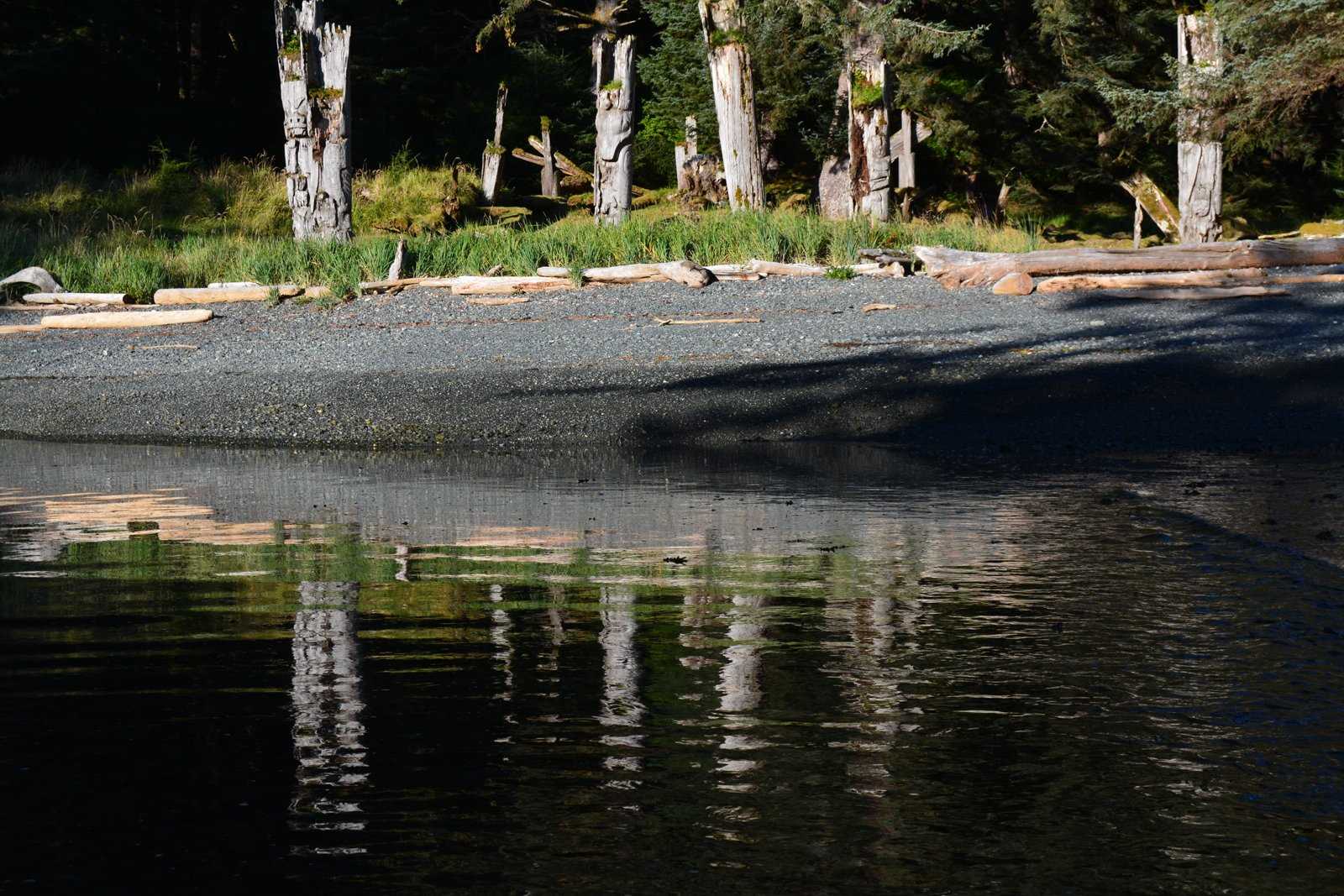A motion filled transit of 120 nautical miles south along the eastern shore of Moresby Island (from Queen Charlotte City) rewarded us with a pacified anchorage on the exposed southwest coast of Gwaii Haanas and SGang Gwaay (briefly known as Anthony Island). The open Pacific Ocean outwardly within reach, we were soon reminded how resourceful the Haida people whom chose to settle this particular area were. We were led through the Sitka spruce dominated forest by our respective Watchmen–James, Ken, and Fallon; it was not long before we came upon house sites of old where up to 300 Haida people lived for roughly 2,000 years prior to the last big epidemic in the 1860s that extinguished the last of these great water people. Memorial and mortuary poles rose above the hidden beach, which aided in our personal reflections of this thriving culture. The sacredness of this site was felt by all, as we were able to watch the daughter of one of our Watchmen guides play along the shores of her ancestors.
While some explored this UNESCO World Heritage site by foot, others had the opportunity to explore the coastline via expedition landing craft. From the outer waters looking in, we had a glimpse of the totems from the seaside and could only imagine what invading clans or foreign travelers to SGang Gwaay must have first thought when approaching this hidden bay. Kelp beds devoid of sea otters after intensive harvest (from 1787-1840) and whale-less waters perhaps as a result of the nearby Rose Harbor whaling station (1910-1942) helped to tell the story of the islands long history of maritime trade and extraction which inevitably led to the decline of the Haida population here. As the day unfolded we learned more from the Haida Watchmen that protect and teach about this remarkable place. We departed enlightened that the Haida are still here and thriving once again.






